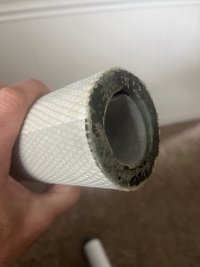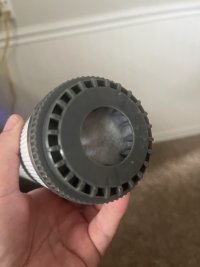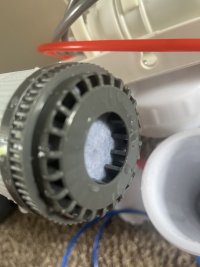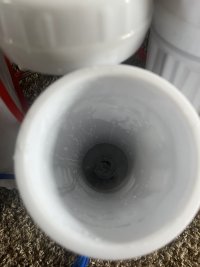I bought a 5-stage RO system from purewaterclub.com for $100 around 2-3 years ago (they have since closed) and it has worked great (low PPM, no issues). Yesterday I did a pre-filter, membrane, and post-filter change and found that one of the factory installed pre-filters had a plastic end cap missing (you could see the glue on the filter base where the cap once was), which was odd as I thought that would be required to make it properly seal/filter. I then found that none of the pre-filters seem to seat in the housings in a way that would make a seal - they kind of just rest on a mismatched pattern and get closed in. Oddly, I got good PPM so either the pre-filters were working, or the RO membrane was constantly on overtime. When I got everything switched out and went through the purge steps, I am getting no output from the RO membrane, it all goes out the drain. The RO membrane is the exact same size and looks identical to the original.
With that experience, I am wondering if this cheaper kit is just a frankenstein setup that does not have filters that actually fit the housings. I started looking around at APEC and iSpring systems, and would like to hear what everyone has had success with. I am looking for an undersink setup as I use RO for drinking water, coffee, cooking, and most importantly, beer.
With that experience, I am wondering if this cheaper kit is just a frankenstein setup that does not have filters that actually fit the housings. I started looking around at APEC and iSpring systems, and would like to hear what everyone has had success with. I am looking for an undersink setup as I use RO for drinking water, coffee, cooking, and most importantly, beer.



























![Craft A Brew - Safale S-04 Dry Yeast - Fermentis - English Ale Dry Yeast - For English and American Ales and Hard Apple Ciders - Ingredients for Home Brewing - Beer Making Supplies - [1 Pack]](https://m.media-amazon.com/images/I/41fVGNh6JfL._SL500_.jpg)
































